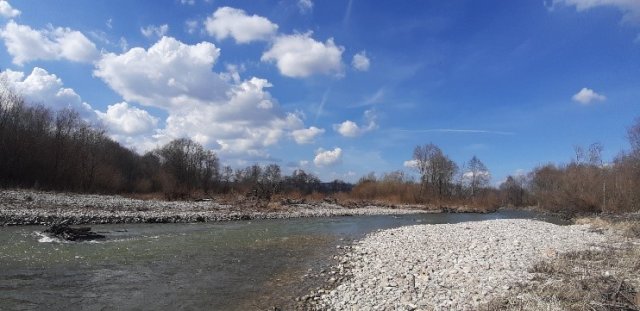Understanding Public Perceptions and Demands of Aquatic Resources Can Support Sustainable Management Practices

Published April 6, 2021
Surface waters – such as rivers, streams, lakes, reservoirs, estuaries, and coastal waters – are the primary types of aquatic resources that people interact with daily. As the global population continues to grow, demand increases for water resources. Scientists have long collaborated with government and local agencies to help manage these aquatic systems, and increasingly, researchers have been emphasizing the importance of treating our waterways as social-ecological systems. This view of systems recognizes the interconnected and resilient relationships between humans and nature. Understanding how individuals can positively interact and respond to water bodies over long periods of time would better support the sustainable management of aquatic resources.
EPA ecologist Joseph Flotemersch has been collaborating with partners from various institutes and universities around the world to examine why this social-ecological approach is essential for sustainable management. Flotemersch argues that it’s crucial to pinpoint how systems are part of people’s identities.
“By considering the diverse social values of the community and incorporating those into management plans, you increase community support for the actions and long-term sustainability and protection,” says Flotemersch. “Main sociocultural factors that influence public perceptions of aquatic ecosystems mentioned in the literature include age, education, and cultural values.”
Flotemersch emphasizes that public opinion should not be the only driver of decisions, but that public perceptions and preferences should also be considered along with science-based evidence when developing aquatic ecosystem management options. Management activities may benefit from the inclusion of well-structured public outreach activities and educational programs. Outreach and educational activities—such as sharing information on social media, websites, and through publications—aim to communicate science-based information in a way that can help increase the public’s understanding of environmental issues. These activities can ultimately promote pro-environmental behaviors that protect and preserve aquatic ecosystems and the many services they provide to society.
In related research, EPA scientists Kate Mulvaney, Nate Merrill, and Marisa Mazzotta are investigating how humans’ perceptions of water quality are developed and how well those perceptions match biophysical water quality analyses. If researchers understand where and why different perceptions exist, then water quality managers can develop more effective strategies to help ensure the long-term sustainability of aquatic ecosystems. The researchers are using both qualitative (i.e., focus groups) and quantitative (i.e., regional survey) methods to investigate how different features of waters and shores affect overall perceptions. For example, one person might think a water body is in good condition, but another person might think the same water body is in poor condition. The scientists will use this increased understanding of perspectives to analyze relationships with biophysical measurements, such as satellite clarity values, shoreline type (i.e., marsh, pier, beaches), and bacteria counts resulting in beach closures.
Other perceptions the scientists are investigating include relationships with water quality-related policies. For instance, the scientists are researching Total Maximum Daily Loads, which calculate the maximum amount of a pollutant that is allowed to enter a waterbody while still meeting established water quality standards. They are also studying shellfish closure status which occurs when shellfish cannot be harvested due to human health concerns, in hopes of increasing public understanding of factors leading to closures.
Another EPA researcher, Galen Kaufman, has been gathering information on how to design, implement, and analyze surveys that provide information about how the public perceive aquatic resources. These surveys will be used by state and tribal water quality criteria regulators. He is currently working on a document that describes the methodologies associated with these surveys and different ways to reach people when conducting surveys. He is also working to raise awareness of important factors researchers should consider when developing standards to protect water bodies.
As a long-term goal, the group aspires to increase awareness and understanding of the diverse audiences and drivers of public perceptions of aquatic resources. This, in turn, will support the Agency’s goal of being more inclusive in their efforts to protect human health and the environment.
Learn More About the Science
- Human Dimensions of Water Quality
- Factors Influencing Perceptions of Aquatic Ecosystems
- Factors Influencing Social Demands of Aquatic Ecosystems
- Understanding Rivers and Their Social Relations: A Critical Step to Advance Environmental Water Management
- Monitoring the Resilience of Rivers as Social–Ecological Systems: A Paradigm Shift for River Assessment in the Twenty‐First Century
- People and Water: Exploring the Social-Ecological Condition of Watersheds of the United States
